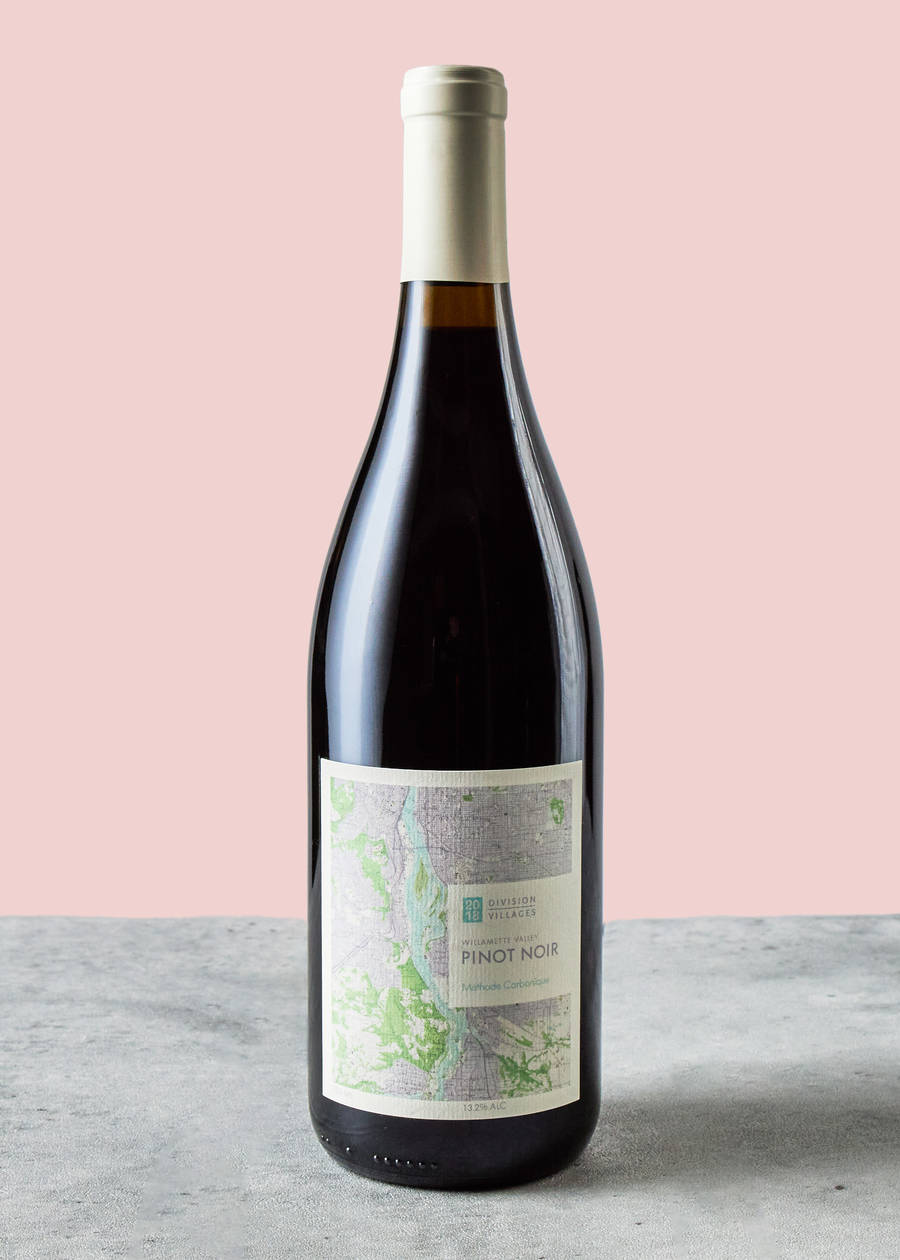The Winery
Division Wine Co is one of a number of modern ‘urban wineries’. Based in Portland, Oregon, they make wines from across Oregon and Washington in a ‘minimal intervention’ style. Inspired by the wines of France, specifically Burgundy, The Loire and The Rhône Valley, they promote and hero biodynamic grape growing.
What is an Urban Winery
An urban winery is as it sounds - a winery based in a city - in this case, Portland, Oregon. They normally buy grapes from outside - there aren’t many city vineyards. The benefit is that they often have bars and visitor experiences, and it means you can make wine in locations distant from the vineyards, e.g. there’s a couple of urban wineries in London and downtown San Francisco.
This Wine
A Pinot Noir made from Willamette Valley fruit and interestingly, made using the Methode Carbonique technique, which has a profound effect on the wine. The team at Division fell in love with this technique for making Pinot, and when you taste the wine it makes a lot of sense.
What is Methode Carbonique?
At a top line level, Methode Carbonique, or Carbonic Maceration as it’s also known; Carbo if you’re a real wine geek, or ‘Cab Mac’ if you’re an Aussie wine geek, is a winemaking technique that leads to light, juicy and fruity wines with minimal tannin and soft acids. Wines made this way are unique and identifiable.
How does it work?
Normally when making a wine, you crush the fruit, extract the juice, and yeast converts the sugar to alcohol.
With ‘carbo’, whole bunches of grapes are sealed in a container with carbon dioxide. The initial fermentation occurs without yeast - the intact berries begin to ferment from the inside out in the presence of CO2, which creates a different set of flavour compounds and acids to those which occur in a normal ferment.
At around 2% alcohol, the grapes burst, releasing their juice naturally. At this point the carbonic ferment ends and the winemaking begins to return to normal - winemakers use what is known as a Pied de Cuve to begin a natural ferment. This is a bit like a sourdough starter, a small amount of grape juice is allowed to ferment with wild yeast, which is then added to the 2% juice from the carbo and the wine proceeds to ferment as normal.
Where else can I find it?
Methode Carbonique was developed in Beaujolais, the Gamay has been fermented this way for over half a century, and is one of the defining features of the wines from that region. But recently, as winemakers have become more adventurous, more and more producers are now using the technique, or variations of it in order to create a specific style of wine
What does it lead to in wine?
Methode Carbonique is a delicate winemaking technique, which creates bright, juicy wines, with lots of fragrant and sometimes even a little confected fruit flavour - like bubble gum or strawberry laces. This Pinot from Division has a bright, red fruit character, and a fresh, crunchy feel in the mouth. It has an intense Pinot perfume and really captures and intensifies characteristics that would normally be pretty subtle in Pinot - incense spice, rose petal and macerated wild strawberry notes.










